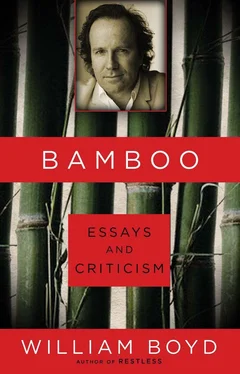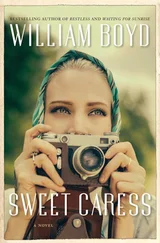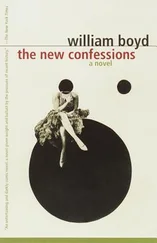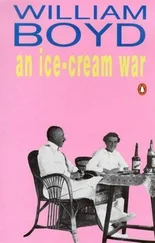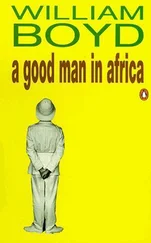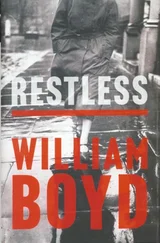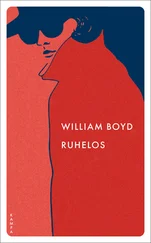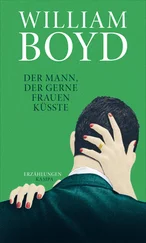I believe you actually discussed the changes to Aunt Julia with Vargas Llosa.
Yes, I did. There’s a character in the novel who writes soap operas for the radio, about fifteen different stories which get progressively more surreal and outlandish, and there was no way the film could cope with that. Vargas Llosa, who had approved the Americanization of the novel, just said, “Go for it. Do the best you can.” He knew the book would be respected and he was very pleased with the film. What got him furious was that the American distributor changed the title to Tune In Tomorrow. It was a real no-brainer, but they thought that they had a comic hit on their hands and they felt that the original title was a bit too arthouse. I protested vehemently; Vargas Llosa refused to have anything to do with it; the film did no business at all; and every review started with, “What idiot changed the title?” But it’s good work and I’m proud of it. I’ve got a full-page ad for the film from The New York Times which is chock-a-block with raves. We got across-the-board raves for Mister Johnson, as well — Bruce Beresford said he’s never had such good reviews — but it didn’t even do a million dollars’ business in the US. It did nothing here. It played for just four weeks in one cinema. If you looked up Mister Johnson on some database of US critics you’d say, “Why didn’t this film do better?” Well, because of the financial precariousness of the distributor, and the fact that the guy at Fox who commissioned the movie had been fired. The main achievement was to get the films made, so I’m quite philosophical about these things.
Three of your novels have been filmed: Stars and Bars, A Good Man in Africa and Armadillo. Are you able to take more or less licence with your own work?
More licence. Because the book is always there, the adaptation is a wonderful bonus and I can authorize myself to strike a pencil through this or that character and this or that episode. I also find that as soon as a character becomes flesh and blood, once you see the contribution of a talented actor in the role, all sorts of beneficial and productive things can suggest themselves. A minor character can bloom with the right casting, and you might exploit that by bringing them into a scene and giving them lines to say. In A Good Man in Africa, Sean Connery brought something to the role of Dr Murray which simply wasn’t there on the page. So we worked on his part together, and wrote a few more gags for Dr Murray, because it would have been a terrible shame not to exploit that acerbic and laconic sense of humour.
How did you stay philosophical when Stars and Bars and A Good Man in Africa failed both critically and commercially?
They were not great critical or commercial successes, but I don’t think of them as films which have failed. Bits of them don’t work, but they both have tremendous casts and they’re both really entertaining, which is not bad given the vagaries of the business. Again, getting the films made was probably the great achievement. We had hellish problems setting up Stars and Bars, then it was flushed down the toilet by Columbia, post-Puttnam, so it never had a chance. It might have been ahead of its time. If a quirky comedy about an Englishman abroad had been released in 1999 instead of 1988, it might have been seen in the context of all these British films which play to their strengths in the same way. Lots of works of art are perceived not to have delivered at the time of their presentation to the marketplace but can be savoured later on, when all the fuss has died down. The effect of criticism is transient and ephemeral, but these films pop up on television in their post-release life and are watched and appreciated. You want everything you do to be as big a success as possible, but you should also be trying to make the best film that you can. If you try to second-guess the market and write a sub-Hannibal Lecter film and it bombs, then you must feel like a complete whore, but if you’ve done your best and you’re pleased with the film, then it has to take its chances. The Trench didn’t get a US distributor, but there’s nothing I can do about that. It’s the film I wanted to make and if it’s too dark and sad to play commercially then so be it. You’re striving all the time — I think this is true of every artist — to be popular and preserve your integrity: “Can I have both, please?”
That aspiration was certainly true of Charlie Chaplin, whose life you tackled for Richard Attenborough. What attracted you to that project?
It came at a very good time for me because I’d just finished writing Brazzaville Beach, my brain was empty and I literally had nothing to do. Everybody knows a bit about Chaplin — about “The Tramp” and United Artists — but the true story is unbelievably dark and intense. “The Tramp” was not Charlie Chaplin. He was very left wing but ran his studio like a fascist dictator. He was vastly wealthy and became obsessed with young girls. Having written The New Confessions by then, I found that whole period of American film-making fascinating. Also I really, really liked Dickie. You think, “I get to work with Richard Attenborough. How fantastic is that?” He has this habit of saying, “Steve used to say to me …” and you think, “Who’s Steve?” and after a while you realize it’s Steve McQueen. He has a phenomenal history, he’s known everybody and is an amazing man.
In The New Confessions, you had several hundred pages to explore the life of its fictitious director. In Chaplin, you only had three hours or so.
The biopic is the hardest genre to pull off without it ending up as some sort of documentary. Again, it’s an adapting problem, but instead of having a book to adapt you have a life, so it becomes a question of choosing key moments or filmically interesting moments and somehow alluding to the rest. The studio executive on the project, Barry Isaacson, came over here and we thought, “Let’s choose a template, given what we know about the man.” We decided to choose Raging Bull — which sounds silly, but that film also covers a long period and is very dark and intense. To a degree, it distorts Chaplin’s life just to look at his neuroses, but that’s what’s really interesting about the man.
Presumably the character played by Anthony Hopkins, a book editor going over Chaplin’s autobiography with its elderly author, was invented as the means of “alluding to the rest”?
The scenes of Chaplin as an old man were exclusively the work of William Goldman. I didn’t write a single word of them. My first draft started with Chaplin as a boy of seven, and ended in his late sixties when he was banished from America. My thinking was that his banishment was the end of the story: “We made you, so we can throw you out.” After that he lived in Switzerland and had lots of kids. We thought that Robert Downey Jr could pick it up at seventeen and age up to about seventy, but taking it to eighty and having him wear twenty pounds of prosthetic make-up was stretching credulity a bit far, in my opinion. The history of the film was fraught, because it collapsed and Attenbor-ough had to set the whole thing up again. It was ready to go, but Universal were unhappy with the budget. Tom Stoppard did a pass at it before they put it in turnaround, then a year later it went to Carolco and his revisions were lifted out and William Goldman was brought in to write the extra scenes.
Including the scenes where Chaplin accepts a Lifetime Achievement Oscar?
Читать дальше
